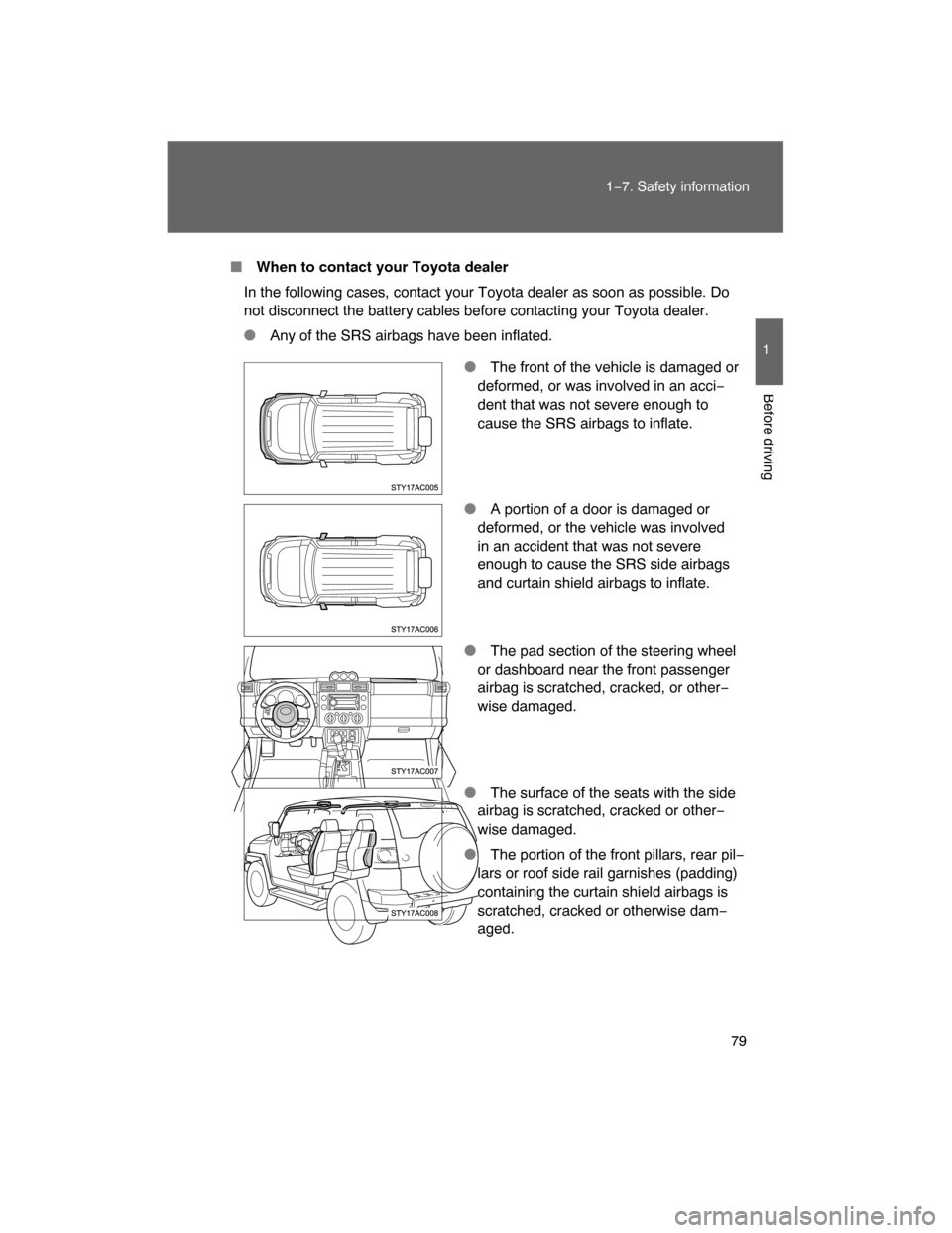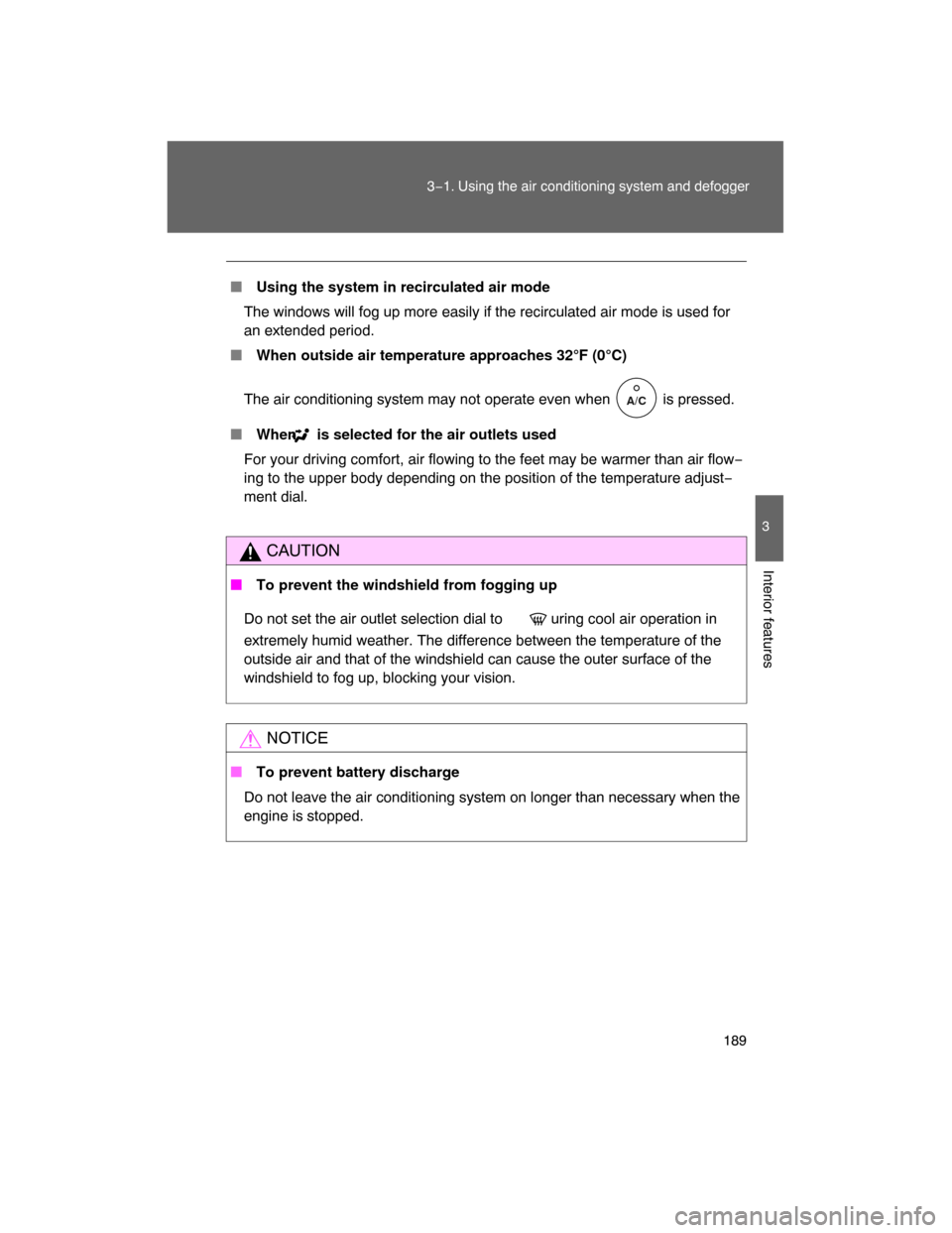Page 4 of 400

TABLE OF CONTENTSIndex
4
Floor mat ............................ 247
Luggage storage box (vehicles
without sub woofer) .......... 248
Luggage compartment
features ............................ 249
Compass ............................ 252
4�1. Maintenance and care ...... 258
Cleaning and protecting the
vehicle exterior ................. 258
Cleaning and protecting the
vehicle interior .................. 260
4�2. Maintenance ..................... 263
Maintenance
requirements .................... 263
General maintenance ......... 265
Emission inspection and
maintenance (I/M)
programs .......................... 268
4�3. Do�it�yourself
maintenance ................... 269
Do−it−yourself service
precautions ...................... 269
Hood ................................... 273
Engine compartment .......... 274
Tires ................................... 287
Tire inflation pressure ......... 292
Wheels ............................... 296
Air conditioning filter ........... 298
Key battery ......................... 301
Checking and replacing
fuses ................................ 303
Light bulbs .......................... 3145�1. Essential information ....... 322
If your vehicle needs to be
towed ................................ 322
If you think something is
wrong ................................ 327
Fuel pump shut off
system .............................. 328
Event data recorder ............ 329
5�2. Steps to take in an
emergency ...................... 331
If a warning light turns on
or a warning buzzer
sounds... ........................... 331
If you have a flat tire ........... 340
If the engine will not start .... 350
If the shift lever cannot be
shifted from P ................... 351
If you lose your keys ........... 352
If the vehicle battery is
discharged ........................ 353
If your vehicle overheats ..... 356
If the vehicle becomes
stuck ................................. 359
6�1. Specifications ................... 362
Maintenance data
(fuel, oil level, etc.) ........... 362
Fuel information .................. 372
Tire information ................... 375
4Maintenance and care
5When trouble arises
6Vehicle specifications
Page 30 of 400

31
1−2. Opening, closing and locking the doors
1
Before driving
� Key battery depletion
The standard battery life is 1 to 2 years. (The battery becomes depleted
even if the key is not used.) If the wireless remote control function does not
operate, the battery may be depleted. Replace the battery when necessary.
(P. 301)
�Security feature
If a door is not opened within approximately 60 seconds after the vehicle is
unlocked, the security feature automatically locks the vehicle again.
�Conditions affecting operation
The wireless remote control function may not operate normally in the follow−
ing situations.
�Near a TV tower, radio station, electr ic power plant, airport or other facil−
ity that generates strong radio waves
� When carrying a portable radio, cell ular phone or other wireless commu−
nication device
�Conditions affecting operation
�When multiple wireless keys are in the vicinity
�When the wireless key has come into contact with, or is covered by a
metallic object
� When a wireless key (that emits radio waves) is being used nearby
�When the wireless key has been left near an electrical appliance such as
a personal computer
� Customization that can be configured at Toyota dealer
Settings (e.g. wireless remote control system) can be changed.
(Customizable features
P. 386)
Page 78 of 400

79
1−7. Safety information
1
Before driving
� When to contact your Toyota dealer
In the following cases, contact your Toyota dealer as soon as possible. Do
not disconnect the battery cables before contacting your Toyota dealer.
� Any of the SRS airbags have been inflated.
� The front of the vehicle is damaged or
deformed, or was involved in an acci−
dent that was not severe enough to
cause the SRS airbags to inflate.
� A portion of a door is damaged or
deformed, or the vehicle was involved
in an accident that was not severe
enough to cause the SRS side airbags
and curtain shield airbags to inflate.
� The pad section of the steering wheel
or dashboard near the front passenger
airbag is scratched, cracked, or other−
wise damaged.
� The surface of the seats with the side
airbag is scratched, cracked or other−
wise damaged.
� The portion of the front pillars, rear pil−
lars or roof side rail garnishes (padding)
containing the curtain shield airbags is
scratched, cracked or otherwise dam−
aged.
Page 114 of 400
116 2−1. Driving procedures
CAUTION
� Caution while driving
Do not turn the engine switch to the LOCK position.
If in an emergency, you must turn the engine off while the vehicle is moving,
turn the engine switch only to the ACC position.
NOTICE
� To prevent battery discharge
Do not leave the engine switch in the ACC or ON position for long periods if
the engine is not running.
� When starting the engine
� Do not crank for more than 30 seconds at a time. This may overheat the
starter and wiring systems.
�Do not race a cold engine.
�
If the engine becomes difficult to start or stalls frequently, have the engine
checked immediately.
Page 130 of 400

132 2−3. Operating the lights and wipers
� Daytime running light system (if equipped)
To make your vehicle more visible to other drivers, the headlights turn on
automatically (at a reduced intensity) whenever the engine is started and the
parking brake is released. Daytime
running lights are not designed for use at
night.
�Automatic light off system
�When the headlights come on: The headlights and tail lights turn off 30
seconds after all doors and glass hatch are closed with the engine switch
turned to the ACC or LOCK position. (The lights turn off immediately if
the LOCK button on the wireless remote control is pressed twice after all
doors are locked.)
� When only the tail lights come on: The tail lights turn off automatically
with the engine switch turned to the ACC or LOCK position and the
driver ’s door is opened.
If the driver ’s door is kept open, the lights automatically turn off after 30 min−
utes.
To turn the lights on again, turn the engine switch to the ON position, or turn
the headlight switch off once and then back to the or position.
� Customization that can be configured at Toyota dealer
Settings (automatic light off system) can be changed. (Customizable
features
P. 386)
NOTICE
� To prevent battery discharge
Do not leave the lights on longer than necessary when the engine is not run−
ning.
Page 167 of 400

169
2−5. Driving information
2
When driving
Winter driving tips
Carry out the necessary preparations and inspections before driving
the vehicle in winter. Always drive the vehicle in a manner appropri�
ate to the prevailing weather conditions.
� Pre�winter preparations
� Use fluids that are appropriate to the prevailing outside tem−
peratures.
�Engine oil
�Engine coolant
�Washer fluid
� Have a service technician inspect the level and specific grav−
ity of battery electrolyte.
�Have the vehicle fitted with four snow tires or purchase a set
of tire chains for the rear tires.
Ensure that all tires are the same size and brand, and that chains
match the size of the tires.
� Before driving the vehicle
Perform the following according to the driving conditions.
�
Do not try to forcibly open a window, scrape an outside rear
view mirror surface or move a wiper or outside rear view mir−
ror that is frozen. Pour warm water over the frozen area to
melt the ice. Wipe away the water immediately to prevent it
from freezing.
�To ensure proper operation of th e climate control system fan,
remove any snow that has accumulated on the air inlet vents
in front of the windshield.
�Remove any ice that has accumulated on the vehicle chassis.
�
Periodically check for and remo ve any excess ice or snow
that may have accumulated in the wheel well or on the
brakes.
Page 186 of 400

189
3−1. Using the air conditioning system and defogger
3
Interior features
� Using the system in recirculated air mode
The windows will fog up more easily if the recirculated air mode is used for
an extended period.
� When outside air temperature approaches 32�F (0�C)
The air conditioning system may not operate even when
is pressed.
� When
is selected for the air outlets used
For your driving comfort, air flowing to the feet may be warmer than air flow−
ing to the upper body depending on the position of the temperature adjust−
ment dial.
CAUTION
� To prevent the windshield from fogging up
Do not set the air outlet selection dial to during cool air operation in
extremely humid weather. The difference between the temperature of the
outside air and that of the windshield can cause the outer surface of the
windshield to fog up, blocking your vision.
NOTICE
� To prevent battery discharge
Do not leave the air conditioning system on longer than necessary when the
engine is stopped.
A/C
Page 187 of 400
190
3−1. Using the air conditioning system and defogger
Rear window defogger
� The rear window defogger can be operated when
The engine switch is in the ON position.
NOTICE
� To prevent battery discharge
Turn the rear window defogger off when the engine is off.
Clear the rear window using the defogger.
ON/OFF
Press the button to turn on the
rear window defogger. The
indicator light will come on.
The defogger will automatically
turn off after 15 to 240 minutes.
The operation time changes
according to the ambient tem−
perature and vehicle speed.
Pressing the button again also
turns the defogger off.